Posted: 20 December 2012 By: Sarah Marshall, http://www.journalism.co.uk
Seven industry experts – from local, national and international news outlets – share their predictions for digital journalism
We asked seven industry experts to share their predictions for digital journalism in 2013.They are key figures from the New York Times, WSJ.com, FT.com, the Daily Post, plus an academic, the founder social news agency Storyful, and a leader in B2B who is also chair of the Association of Online Publishers.There are predictions around mobile, paywalls, social media platforms and more.If you would prefer to hear them explain their predictions, you can listen to them speaking in this podcast. Here they are listed in alphabetical order of first name.
Alison Gow, editor of the Daily Post and DailyPost.co.uk, North WalesSocial tools
 Alison Gow predicts there will be a need for journalists to "work smarter not harder" in 2013, using digital tools to help "do the job more efficiently".Her team currently uses a range of tools "to try and bring the news to people in the event of a news break".They include Geofeedia, Spundge, Twitter Search,Instagram* and RSS feeds, for example, to find out what people are talking about when a story breaks, and "potentially tap into users who are on the scene".When covering the story of floods in North Wales, Gow's team used the above social tools "to spot where things were happening, who was there talking or tweeting or posting video, and to get in contact and start the conversation."It is all about "helping people tell the story", she says.
Alison Gow predicts there will be a need for journalists to "work smarter not harder" in 2013, using digital tools to help "do the job more efficiently".Her team currently uses a range of tools "to try and bring the news to people in the event of a news break".They include Geofeedia, Spundge, Twitter Search,Instagram* and RSS feeds, for example, to find out what people are talking about when a story breaks, and "potentially tap into users who are on the scene".When covering the story of floods in North Wales, Gow's team used the above social tools "to spot where things were happening, who was there talking or tweeting or posting video, and to get in contact and start the conversation."It is all about "helping people tell the story", she says.
Aron Pilhofer, editor of interactive news, New York Times 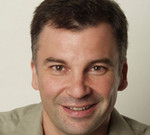 Aron Pilhofer runs a team that spans data journalism, social media and community. One of the areas the New York Times will be focussing on in 2013 is community.Going deeper"We are focussing a lot on community and going from having a sort of comments-based community to more of an engaged community where maybe you are blurring the lines a little bit between UGC [user-generated content] and social media and comments – to the point where you are creating, in some cases, new forms of journalism."The New York Times has experimented with this technique on the Well blog. The 'Picture your life after cancer' project, which started in 2010 and was updated this year, encouraged cancer survivors to share photographs of themselves."It was entirely reader-driven," Pilhofer said. "Although it was curated and edited by us, the content came from readers and it was a really striking and pretty incredible piece of journalism. I would expect to see a whole lot more of that."
Aron Pilhofer runs a team that spans data journalism, social media and community. One of the areas the New York Times will be focussing on in 2013 is community.Going deeper"We are focussing a lot on community and going from having a sort of comments-based community to more of an engaged community where maybe you are blurring the lines a little bit between UGC [user-generated content] and social media and comments – to the point where you are creating, in some cases, new forms of journalism."The New York Times has experimented with this technique on the Well blog. The 'Picture your life after cancer' project, which started in 2010 and was updated this year, encouraged cancer survivors to share photographs of themselves."It was entirely reader-driven," Pilhofer said. "Although it was curated and edited by us, the content came from readers and it was a really striking and pretty incredible piece of journalism. I would expect to see a whole lot more of that."
New skillsPilhofer also predicts that we will see specialists from outside journalism being brought into the newsroom."You are really seeing a re-definition of who is a journalist and the kinds of skills necessary to move into the digital world."
You are really seeing a re-definition of who is a journalist and the kinds of skills necessary to move into the digital world
Aron Pilhofer, New York Times
"This isn't particularly surprising as these are skills that most startups have, these are skills that most web startups consider essential to their business, to understanding their readers, to understanding their customers."I think you are just starting to see that happen in newsrooms, that realisation that data analysis, coding skills, having people like Mike Bostock, a brilliant data visualisation expert, who suddenly is a graphic artist, he's on the graphics desk although he doesn't have journalism background."That's the trend you are starting to see and to me it is a very exciting trend and I'm enthusiastic to see this happening."
François Nel, Journalism Leaders' Programme at the University of Central Lancashire
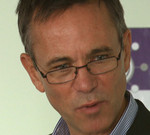 ResponsibilityFrançois Nel believes "one of the key words that will feature in digital journalism circles in 2013 is 'responsibility'"."There's been a lot of talk lately about the responsibilities – and even irresponsibilities – of news organisations, and I think that will continue in 2013, but I think we will also see a lot more discussion about the responsibilities of digital news users."It's clearly not responsible, I believe, or sustainable for users of any goods or services to expect something for nothing. I think as we see traditional media's share of advertising spend remain under pressure in 2013, and I don't think that will change, I think that responsible digital news consumers will start to realise that contributing directly towards the cost of the news and information they rely on is simply the right thing to do."
ResponsibilityFrançois Nel believes "one of the key words that will feature in digital journalism circles in 2013 is 'responsibility'"."There's been a lot of talk lately about the responsibilities – and even irresponsibilities – of news organisations, and I think that will continue in 2013, but I think we will also see a lot more discussion about the responsibilities of digital news users."It's clearly not responsible, I believe, or sustainable for users of any goods or services to expect something for nothing. I think as we see traditional media's share of advertising spend remain under pressure in 2013, and I don't think that will change, I think that responsible digital news consumers will start to realise that contributing directly towards the cost of the news and information they rely on is simply the right thing to do."
ResponsivenessNel believes that 'responsiveness' is another word that will "loom large in 2013"."It's likely that a lot of people will be predicting that for news organisations 2013 will be the year that they ramp up their mobile activities. We've already seen occasions when news sites like the Guardian have more traffic via mobile than desktop at some times of the day."I think Santa will probably by stuffing thousands of smartphones and tablets into Christmas stockings this year, and the challenges for news organisations are not only about how to shift their content onto an increasing variety of mobile devices, but also how to take advantage of the commercial opportunities that high-speed, affordable mobile connectivity brings.
Talent
Forward-thinking executives will not only be focusing on how to work smarter in 2013, bit also how to get the smartest people to work for them or with them
François Nel, academic
"There will also be a lot more talk about talent," Nel predicts."After several years of reorganisation – and I think right-sizing of news operations – news organisations that I deal with across the globe are increasingly recognising that their future must depend not only on cutting costs and investing in new digital technologies, but also on attracting and nurturing talent."Forward-thinking executives will not only be focusing on how to work smarter in 2013, bit also how to get the smartest people to work for them or with them."John Barnes, managing director of digital and tech at Incisive Media and chair of the AOP  John Barnes says one of the huge challenges for publishers is around sustainability. "Advertisers want premium-quality content and premium-quality content sites want advertisers."He says there is "danger with the way the market is going" in that "big advertising units interrupt the reading experience and we are increasingly endangering that value creation that premium publishers have".Native advertisingBarnes predicts the rise of so-called native advertising. "Native advertising is basically advertising messages that are presented in a friendly and useful way," Barnes explained."A good example of native advertising is putting advertising components intoCAPTCHA code boxes. So rather than typing a piece of gobbledygook you often can't read, you might be typing an advertising message which is 'I love Volvos', or something like that."You are making an advertising proposition out of something that lives on the page already that doesn't actually damage the value of the site and actually is potentially quite useful; it's easier to type 'I love Volvos' than it is to try and interpret some weird and wacky CAPTCHA code."Viewable adsBarnes also predicts the rise in the adoption of viewable ads, which are already being used by Forbes.com.In-view ads come in and out of view as the user scrolls, meaning there are fewer advertisements on the page at any one time."Viewable ads are really critical because if they are working well, what they actually mean is rather than being faced with a page with lots of ads on it, what you are seeing is a page with very few ads on it, and depending on how far down you get, they will serve a reasonable amount of advertising."AOP research has found that the viewability of ads towards the bottom of the page is significantly higher than the viewability at the top of the page."That is because people are reading articles and they are getting to the bottom of the page, so that's a really interesting justification for long-form journalism."Mark Little, founder and chief executive of social news agency Storyful
John Barnes says one of the huge challenges for publishers is around sustainability. "Advertisers want premium-quality content and premium-quality content sites want advertisers."He says there is "danger with the way the market is going" in that "big advertising units interrupt the reading experience and we are increasingly endangering that value creation that premium publishers have".Native advertisingBarnes predicts the rise of so-called native advertising. "Native advertising is basically advertising messages that are presented in a friendly and useful way," Barnes explained."A good example of native advertising is putting advertising components intoCAPTCHA code boxes. So rather than typing a piece of gobbledygook you often can't read, you might be typing an advertising message which is 'I love Volvos', or something like that."You are making an advertising proposition out of something that lives on the page already that doesn't actually damage the value of the site and actually is potentially quite useful; it's easier to type 'I love Volvos' than it is to try and interpret some weird and wacky CAPTCHA code."Viewable adsBarnes also predicts the rise in the adoption of viewable ads, which are already being used by Forbes.com.In-view ads come in and out of view as the user scrolls, meaning there are fewer advertisements on the page at any one time."Viewable ads are really critical because if they are working well, what they actually mean is rather than being faced with a page with lots of ads on it, what you are seeing is a page with very few ads on it, and depending on how far down you get, they will serve a reasonable amount of advertising."AOP research has found that the viewability of ads towards the bottom of the page is significantly higher than the viewability at the top of the page."That is because people are reading articles and they are getting to the bottom of the page, so that's a really interesting justification for long-form journalism."Mark Little, founder and chief executive of social news agency Storyful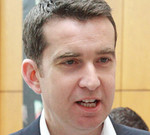
The 'industrialisation' of verificationSocial news agency Storyful sources and verifies stories, images and videos for news outlets. Founder and chief executive Mark Little says 2012 has been the "year of verification".Another trend of 2012, particularly around Hurricane Sandy, has been that the journalist's role has moved to sometimes stopping the spread of information."It is very counter-intuitive for journalists as we don't like to kill a story, we like to spread a story, but this year we have seen a lot more journalists, people like Storyful, like Craig Silverman in the US, the efforts of The Atlantic during Hurricane Sandy, dedicated to debunking, calling bullshit on the hoaxes, making sure that they stop the picture of the five foot shark in a flooded garden in New Jersey"."We are starting to see verification processes scale," Little added. "Simple tools from Google Maps all the way to TinEye, which helps detect false imagery, are becoming more and more a staple of the journalist's tool box.
I think next year will be the year we are really going to start to scale these verification processes, which at the moment are very labour intensive, but I think we will see them become more industrialised
Mark Little, Storyful
"And I think next year will be the year we are really going to start to scale these verification processes, which at the moment are very labour intensive, but I think we will see them become more industrialised."YouTube and Instagram for breaking newsLittle also feels that 2013 will see journalists checking Instagram and YouTube when a story breaks and not just Twitter. (It is worth noting that I spoke to Little before the controversy over the new Instagram terms of service.)"At the beginning of the year I would have said that Twitter was the dominant platform in the first hours hours of a breaking story. But what's interesting now is the way in which platforms like Instagram, and to an extent YouTube, are trying to become the first port of call for people looking for newsworthy content in times of crisis.
"Hurricane Sandy is the stand-out story of the year when it comes to the rise of Instagram. You saw it acting as a social network, not just a place you post photographs but a place where people were talking around content, where people were coming together, testing out the voracity of content, communicating with uploaders. You saw more journalists sitting in the comments box on Instagram asking for permission to use imagery.
"We were starting to see Instagram becoming almost like a photo version of Twitter.
"I think Twitter's dominance will be maintained, but I think Instagram will be one of your tabs in your browser next year when times of crisis hit or a big story breaks."
Little thinks we will also go to YouTube when a story breaks next year. He predicts the platform will become more social and that it "will mimic the features of Facebook".
Little believes "2012 was the year that 'social media' disappeared, when all of the people in established journalism realised that they now are dependent on social platforms".
"Twitter, Facebook and YouTube are no longer added extras; they are central to news practices in journalism going forward.
"We can takeaway the inverted commas around the word 'social media' and just call it media. And thankfully that's one of the greatest positive outcomes of 2012."
Raju Narisetti, managing editor, WSJ Digital Network, Wall Street Journal
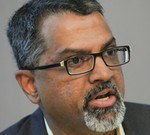 US paywallsRaju Narisetti predicts the rise of more US paywalls. "I think free content from newspapers in the US will become more scarce as more paywalls will go up," he said, "But it is my belief is that most metered paywalls will fail to save the business models of most newspapers.""The good news will be that a lot of newsrooms will focus on the business of journalism than ever before."
US paywallsRaju Narisetti predicts the rise of more US paywalls. "I think free content from newspapers in the US will become more scarce as more paywalls will go up," he said, "But it is my belief is that most metered paywalls will fail to save the business models of most newspapers.""The good news will be that a lot of newsrooms will focus on the business of journalism than ever before."
Advertising
I think free content from newspapers in the US will become more scarce as more paywalls will go up
Raju Narisetti, WSJ.com
Narisetti also thinks there will not be a positive turnaround in ad revenues. "Print and digital display advertising revenues will continue to be under pressure, so US newsrooms will again continue to shrink despite the introduction of paywalls."Ones to watch
Narisetti will be keeping an eye on several companies in 2013."Companies to watch in 2013 beyond Twitter and Apple in the media space will be Cisco, Adobe, Microsoft; plus smaller companies Tout, Spreecast and Storify. Products that will occupy more of our mind share in 2013 will be YouTube, Google Glass and Square."
Stephen Pinches, group product manager for emerging platforms, FT.com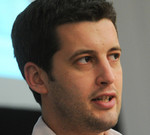
Tablet Christmas
Stephen Pinches that there will be a shift in the tablet market in 2013.
"News organisations are going to have to be very, very good at adapting their content to different screen sizes. There's going to be a lot more thinking, a lot more creativity around the display of content next year."
PaywallsHe also thinks we will see more paywalls put up."We have seen a lot of rumours about newspapers in the US putting in paywalls and also all around the world, in Germany and in many other countries, so I think next year we are really going to see people re-evaluating their business models and thinking very carefully about how they can best make money out of their content."





 Responsibility
Responsibility

 US paywalls
US paywalls









 ISLAMABAD: The EU ambassador to Pakistan Lars- Gunnar Wigemark Wednesday said media played important role in early rehabilitation and recovery of the flood affected people.
ISLAMABAD: The EU ambassador to Pakistan Lars- Gunnar Wigemark Wednesday said media played important role in early rehabilitation and recovery of the flood affected people.